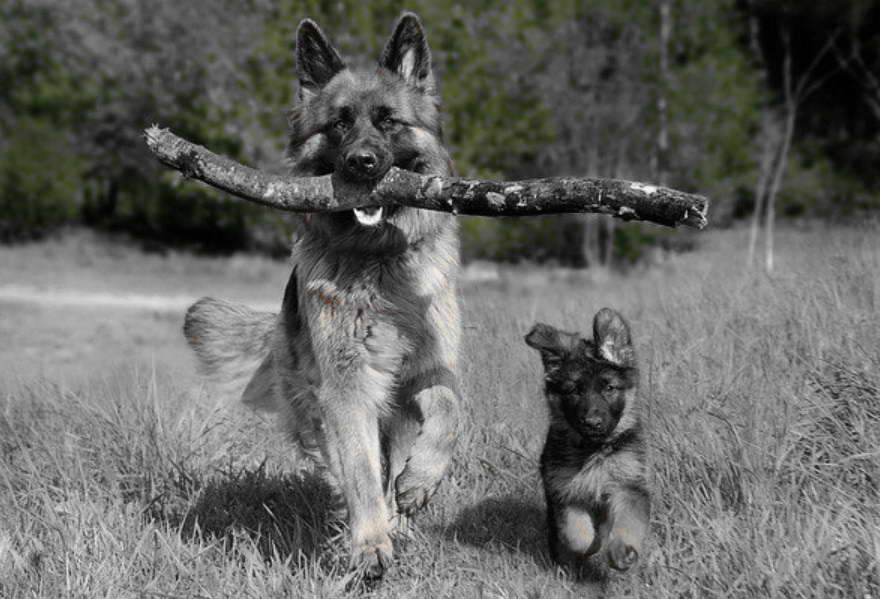
Tips For Training a German Shepherd Puppy
There are many tips for training a German Shepherd, but the most important ones come in the form of patience, love, and positive reinforcement. The best way to train your puppy is to make sure he or she understands your intentions and has positive associations with you. Training a German Shepherd puppy at the early stages is important for the puppy’s well-being. After all, your dog’s future is in your hands, and training him or her is your responsibility.
Train Your German Shepherd at Early Age
Even though it is important to begin training your German Shepherd at an early age, even the oldest German shepherds will benefit from a training session. Training sessions are important because they act as a commitment between you and your German Shepherd. Training sessions should be short, as too long of a training session may lead to distraction and errors. Instead, you should break the training session into manageable segments, each lasting ten minutes or less. And to maximize your training sessions, be sure to only teach one command at a time.
Use Treat
During training, use a treat as an anchor to reinforce your command. A dog will associate the word with the reward. A clicker is a good option for this. Treats should only be given to your dog when he has obeyed your command. Besides, a treat is always welcome, so the dog will be more likely to follow the command. You can also teach your German Shepherd to handle food by hand if you have a bowl in your home. It’s not a good idea to feed your dog directly on your plate.
Command Tone
Another important training tip is to teach your German Shepherd how to listen to you. A German Shepherd will respond to your body language and tone of voice, so try to make the message as clear as possible. Don’t try to be too imposing or aggressive – your dog will not understand your intentions. Make the training process easy by using positive reinforcement and consistent instructions. The fewer bad habits your German Shepherd develops, the easier it will be to train him.
Socialize Your Dog With Other Dogs
Eventually, you can introduce your German Shepherd puppy to other dogs and people but start slowly. Avoid approaching every dog that comes along, but allow getting used to other dogs. This way, your German Shepherd will be less excited and will react more positively. If your puppy isn’t yet used to the concept, you can consider using a muzzle during this stage. If your German Shepherd has a problem with a strange dog, consider muzzling him until he becomes comfortable in his new environment.
Training Session
When it comes to German Shepherd training, you can begin as early as seven to eight weeks old. The first training session should be gentle and fun, as a puppy’s brain is not yet mature enough to understand what you are asking of it. Try to attract your puppy’s attention by giving it food treats. The goal is to get him to obey you. If you’re successful, you can use food treats as rewards and praise to train him.
Although it may seem like there’s no optimal training age for a German Shepherd puppy, you should start early so that you can socialize your puppy with other dogs and people. If you start training your dog too soon, you could end up with an untrained adult dog with a host of behavioral issues. But, contrary to popular belief, there’s never too early to begin training a German Shepherd puppy. So, what should you expect?
Basic Command
Start with basic commands. By six or seven months, your puppy should have mastered basic commands, including sit, down, and stay. Try the Push Drop Stick game to see how much your puppy knows. This will allow you to assess his readiness for training. The same goes for other exercises. You can start obedience classes and socialization classes as early as three months old. The key to German Shepherd training is patience, consistency, and treats. This breed of dog is easy to train and is an excellent choice for training beginners.
Grooming is an important part of German Shepherd training. GSD puppies need regular grooming to control shedding and maintain coat health. Grooming a GSD puppy should involve brushing the dog’s coat at least twice a year. Introduce basic grooming tools to your puppy at an early age, so your puppy will grow up to enjoy the process. Grooming should be fun and rewarding! So, don’t forget to take time to learn these skills and enjoy the process!

Leave a Reply